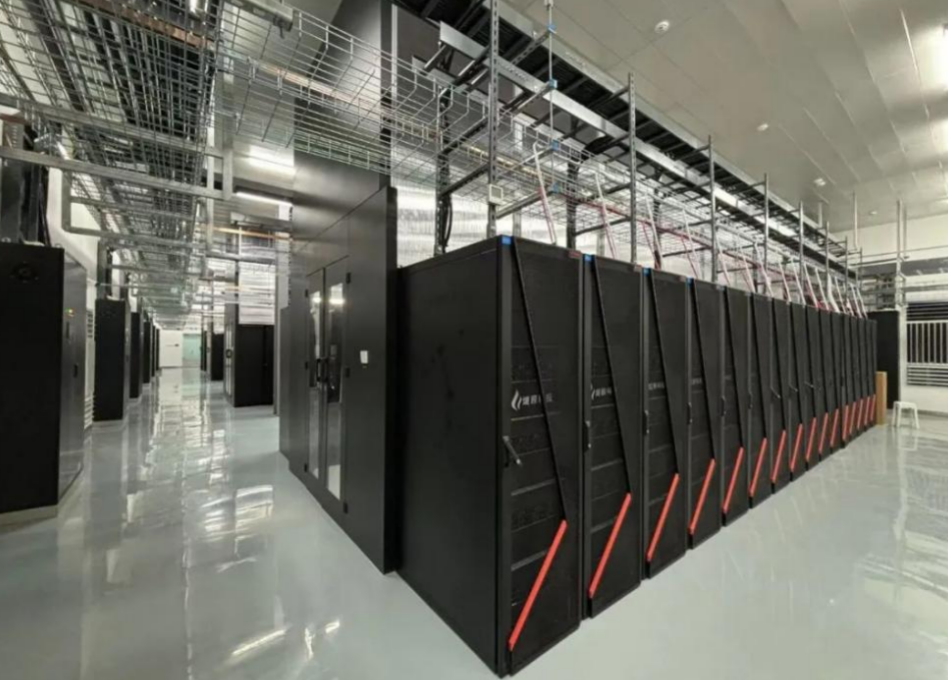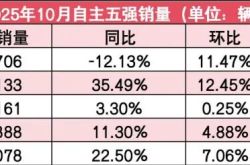"OMG! Tencent Creates a Super Unicorn Valued at 16 Billion: On Track for IPO, Competing with Cambricon"
![]() 11/05 2025
11/05 2025
![]() 353
353
This autumn, Tencent has been reaping a series of successes. One of its major investments, the super unicorn Enflame Technology, has restarted its IPO counseling process (for the STAR Market). Previously, Tencent-backed Siqi Intelligence submitted its prospectus to the Hong Kong Stock Exchange, and another investment, Minlie Technology, successfully went public.
Everyone knows Cambricon, and you may also be familiar with Moore Threads, Enflame Technology, Biren Technology, and MetaX Technologies. Enflame is a competitor in the domestic GPU space. According to Hurun data, its valuation is disclosed at 16 billion yuan.
A notable feature: Enflame has deep ties with Tencent.
Just five months after its establishment, Tencent led a 340 million yuan investment, breaking industry records that year. In subsequent years, Tencent continued to participate in multiple funding rounds, becoming its largest institutional shareholder with a stake of approximately 20%.
Despite Tencent's support, Enflame operates in a complex market environment.
One of Enflame's key customers is computing power centers. Even with technological breakthroughs, whether customers dare or are willing to adopt domestic solutions is another matter—the process is not instantaneous.
Another challenge: The construction of computing power centers is strictly regulated (requiring approvals). Starting from April 2025, multiple regions received notifications to implement "window guidance" on computing infrastructure construction.
According to Pencil News, the approval rate typically does not exceed 10%. This means fewer companies will need to purchase cards.
This article will analyze Enflame Technology's rise and the future opportunities and challenges for domestic GPUs.
- 01 -
The cultivation of domestic GPU talent owes much to AMD. The founding teams of several domestic GPU unicorns hail from AMD. For instance, MetaX Technologies, which recently went public, was led by CEO Chen Weiliang, formerly AMD's global head of GPU SoC design.
Another example is Enflame Technology, founded by Zhao Lidong, who graduated from Tsinghua University's Department of Electronic Engineering and served as a senior director in AMD's U.S. headquarters product engineering division. His co-founder, Zhang Yalin, worked at AMD's Shanghai R&D center for 11 years.
In March 2018, these two veterans established Enflame Technology in Zhangjiang, Shanghai. Five months later, Tencent jumped on board, leading a 340 million yuan investment and setting a funding record for the chip sector that year.
From 2018 to 2025, Enflame Technology has released approximately three generations of products, including training chips and inference chips. To clarify, training chips are used to train large models, while inference chips run them.
In December 2020, its first-generation training chip was launched, followed by its first-generation inference chip a year later. After the launch, VC firm Wu Yue Feng led a 700 million yuan investment.
Over the next two years, Enflame Technology successively launched its second- and third-generation products.
Of course, Enflame Technology does not solely focus on GPUs. It also develops AI acceleration cards, computing cluster systems, software platforms, and services.
Why? Because its primary customers are computing power centers (operators) with diverse needs.

Enflame Technology's products deployed in computing power centers. Source: Enflame's official WeChat account.
As a computing power center, I need GPUs, but if the computing demand is enormous, I require computing cluster systems to connect thousands of servers for large model training. I also need software platforms and services to ensure AI programs run smoothly on this hardware.
Given this application scenario, it's clear why domestic GPUs are rising: domestic substitution.
Take a hardcore example. Tencent, Enflame's largest shareholder (with ~20% stake), previously relied almost entirely on NVIDIA for GPUs.
For instance, Tencent's AI inference primarily used NVIDIA A100, while China Mobile's computing clusters mostly adopted NVIDIA H100.
This created a monopolistic market, leading to several issues: supply disruptions due to export controls, high costs (exceeding 100,000 yuan per card), and a closed software ecosystem that hindered customization.
The industry will support whoever can address these three pain points.
What's Enflame Technology's approach?
1. Offer affordable products: Enflame's S60 is significantly cheaper than NVIDIA chips with comparable performance.
2. Software: Its open "Yusuan" platform supports secondary development, such as quickly adapting to Meitu's sudden demand for "AI outfit change" computing power. It also supports customizing clusters with tens of thousands of cards.
Additionally, as a Chinese company, it avoids export control issues.
- 02 -
So, how far has the "domestic substitution" of GPUs progressed? If we're talking market share, it might score 30 out of 100. Why? They're not selling well.
The reality is: if left to free choice, computing power centers would rarely buy domestic chips. Simply put, if they do, their computing power becomes unsellable, leaving them with stranded assets. Pencil News confirmed this phenomenon with multiple leading AIDC companies. Even Huawei, a domestic chip leader, faces this market reality.
Customers don't vote with their feet based on cards alone but on the final experience and results. While some domestic chips match NVIDIA in specific metrics, hardware performance isn't the only factor—software ecosystems matter just as much, and this is where domestic GPUs fall short.
It's like having a high-performance smartphone with no usable apps.
Thus, domestic GPUs still hold a small market share.
According to 2025 forecasts by international firms like Bernstein, NVIDIA leads China's AI computing chip market with 54%, followed by Huawei at over 20%. AMD, Cambricon, and other domestic GPUs collectively account for less than 20%.
Some might ask: What about the remaining 30-40%? That includes "policy-driven orders" and "information innovation orders." In a free-market economy, domestic GPUs would have an even smaller share.
Specifically, Enflame Technology holds a minimal share in China's AI computing chip market.
- 03 -
Five years ago, the domestic GPU market was a blue ocean full of opportunities. Today, it's tougher. A direct reason: there are already enough computing power centers, and most cards have been purchased.
Three years ago, building computing power centers was a hot trend. Now, it's a "regulated sector" with extremely low approval rates.
According to Pencil News, the approval rate may be below 10%.
Starting from April 2025, multiple regions received notifications for "window guidance" on computing infrastructure construction and launched nationwide computing power surveys.
Consequently, state-owned enterprises, local governments, and other institutions have significantly slowed their investments in computing power centers. For private companies, approval rates are nearly zero without substantial operational track records from the past three years.
Tightened approvals indicate that computing power centers are seen as an "overheated sector," suggesting fewer orders for domestic GPUs.
In terms of competition, beyond super giants like NVIDIA and Huawei, new players face rivalry from super unicorns such as Cambricon, Enflame Technology, Biren Technology, Moore Threads, and MetaX Technologies.
In this landscape, targeting "general-purpose GPUs" offers minimal opportunities. However, vertical industry chips—like those for medical imaging AI—may present opportunities.
The core logic: In specialized scenarios, "general-purpose GPUs" deliver a poorer user experience. This doesn't mean they lack functionality but that their cost, efficiency, and power consumption are untenable.
General-purpose GPUs are all-rounders, but for specialized tasks—like game design—only rendering-related circuits are used, while others idle, consuming more power.
Does this lead to other impacts? For instance, higher production costs or larger chip sizes? From these economic perspectives, the potential of "specialized chips" becomes evident.
Take medical chips as an example.
According to QYResearch, the global AI medical imaging analysis chip market was valued at approximately 20.76 billion yuan in 2024 and is expected to reach nearly 85.7 billion yuan by 2031, with a CAGR of 22.2% from 2025 to 2031.
What do medical chips do with AI? They support AI-assisted diagnosis, precision medicine, and drug development. These needs are relatively new, with evolving hardware requirements, potentially offering opportunities to disrupt incumbents.
This article does not constitute any investment advice.







